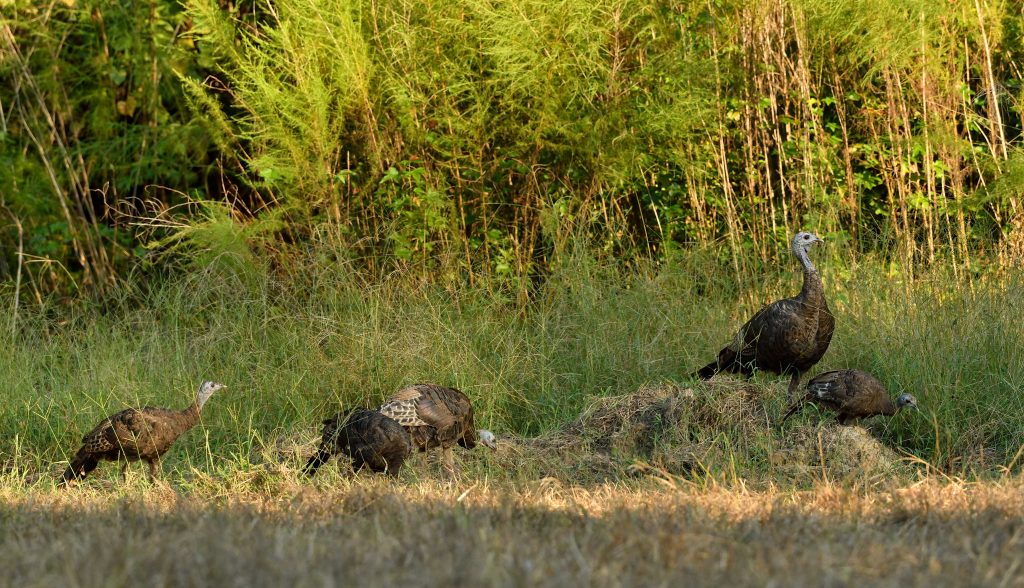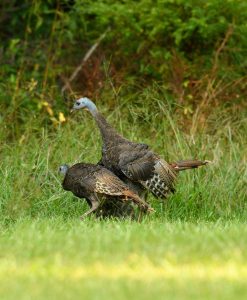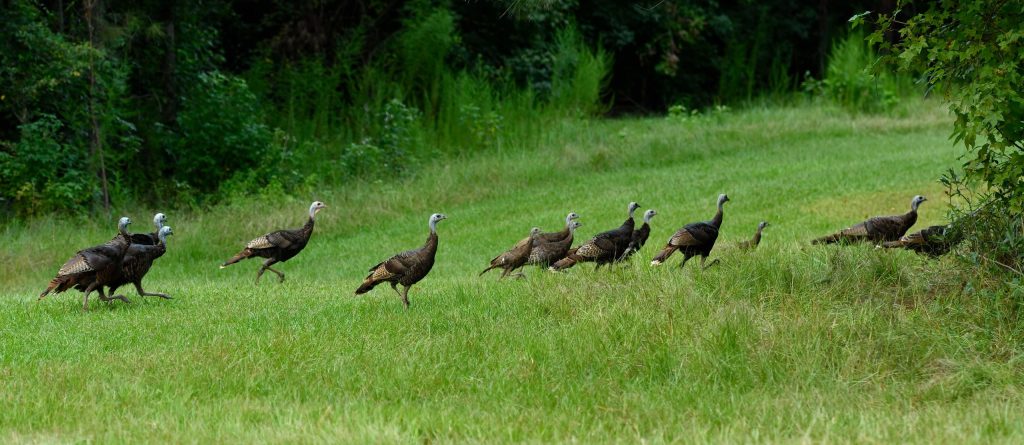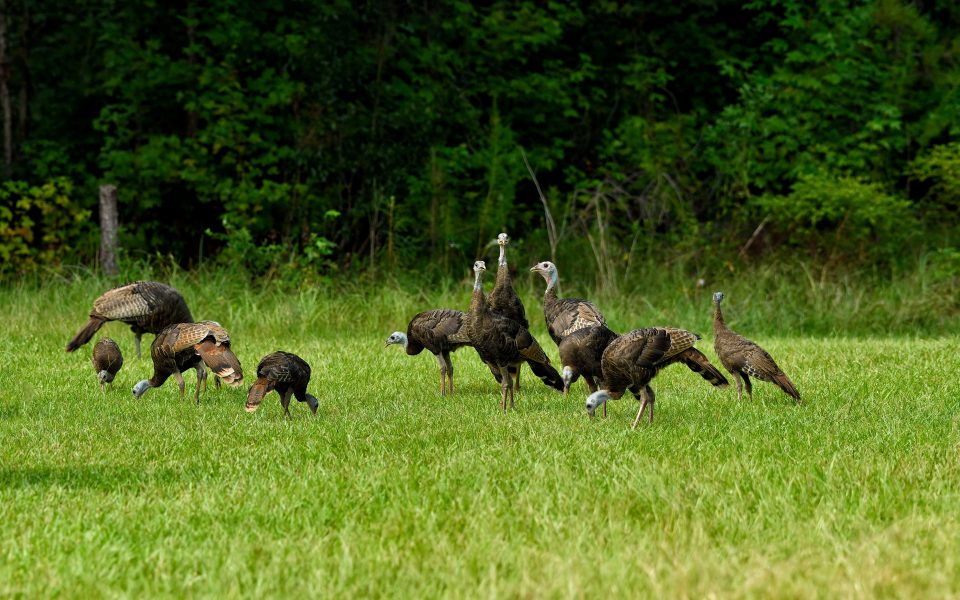The turkey population decline has impacted us for several years, so seeing young turkeys in late summer is cause for celebration. Such was the case in August 2022. Five of the ten hens in the local flock successfully nested and appeared with their broods populating the farm with 23 young turkeys. However, one brood of four was substantially smaller—less than half the size of the other broods which suggested a successful late hatch.
This article will discuss early versus late hatches—renesting and flock social dynamics, habitat and seasonal influences that impact survival rates in late hatched poults. Important insight is included from wild turkey expert and researcher, Dr. Michael J. Chamberlain, PhD., Terrell Distinguished Professor of Wildlife Ecology and Management at Warnell School of Forestry and Natural Resources at the University of Georgia.

Tes Jolly
The Early Bird Gets the Worm
In early August, three watchful hens appeared tending 13 mostly grown juveniles darting about snapping up grasshoppers and stripping seed heads. Late August brought more excitement when two hens appeared with distinctly different aged broods. One hen had seven juveniles about the same size as the first brood flock. The other hen’s four poults were noticeably smaller appearing only about 6-8 weeks old and obviously from a late hatch. Chicken sized, their plumage was a mix of juvenile type contour feathers and adult feathers.
Dr. Chamberlain: “While seeing any poults is a good sign, seeing young poults in late summer is not what turkey managers and landowners actually want to see. Research has shown that earlier hatched nests contribute the most to production at a population level – the early bird gets the worm analogy.”

Tes Jolly
Nesting and Brooding Under Optimal Conditions Means Better Survival Rates

Tes Jolly
Renesting can occur after initial nest abandonment, disturbance while laying or early in the incubation period, or brood loss soon after hatching. Predators, nest disturbance, egg infertility, weather and habitat conditions can influence late nest success. The four poults likely benefited from a summer of mostly moderate temperatures and periodic rains lasting into early fall that kept vegetation lush, safety cover ample and insects plentiful. Research shows late nest success rates are low. Clearly, the four earlier hatches account for the majority of the year’s nesting and brooding successes.
Dr. Chamberlain: “In some populations adult renesting is common but very little renesting is seen by juvenile hens. Some later nests could be influenced by lack of toms to breed with after a failed initial nest. A hen in poorer body condition may delay subsequent nest attempts.
Turkey poults survive better when they’re hatched into optimal conditions – that is, when insects are abundant and vegetation is most succulent. These conditions occur during spring and early summer, whereas later hatched poults must deal with insect abundance that is declining while vegetation becomes more rank with the onslaught of heat in summer.”

Tes Jolly
Late Hatches Face Steeper Odds
The older brood flock was observed on three occasions in September displaying aggressive dominance over the younger flock, each time chasing the younger one from an area it was feeding or loafing in. One time the younger brood flock stood its ground and a noisy confrontation with feathers flying ensued, though without the four small poults who instinctively dashed for cover until the melee subsided.
Dr. Chamberlain: “Brood flocks composed of older poults will actually out-compete and displace flocks containing young poults. In other words, older poults are socially dominant over younger poults and this dominance remains in place as juvenile birds transition into fall and winter flocks. The take home is, the earlier a poult can be hatched the better because later hatched poults face steeper odds not only because of environmental conditions, but also social constraints within flocks.”
Final Thoughts
Gamekeepers, remember, the first direct ancestor to modern wild turkeys appeared during the Pliocene age some six million years ago. This resilient creature filling our dreams has stood the test of time. The hen and her four poults surviving and thriving reminds us wild turkeys can beat the survival odds.
As bleak as poult recruitment numbers seem in places there’s good news. Coordinated efforts among hunters, universities, biologists, conservation organizations, corporations and others are funding and leading scientific research that intends to provide answers that will help direct wild turkey management and recovery where it’s needed. For more information visit https://www.mossyoak.com/wild-turkey-stamp, www.turkeysfortomorrow.org, and https://www.nwtf.org.








